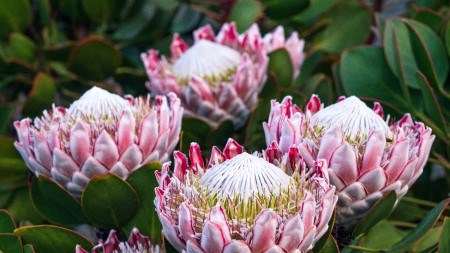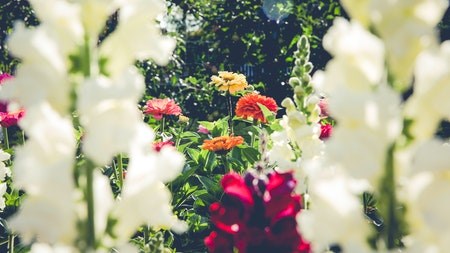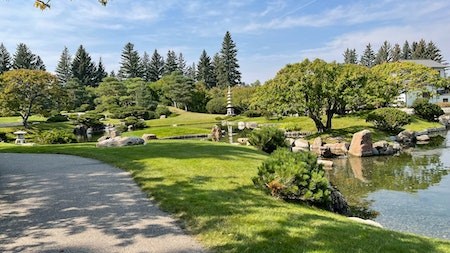Autumn is an excellent time to plant any of the more than 360 species of the protea (Proteaceae) family, which are widely available in nurseries around South Africa as well as online.
The best known specimens are proteas, pincushions (leucospermum), cone bushes (leucadendrons), blushing brides (serruria) and mimetes.
Proteas generally grow well in nutrient-poor soils, and excellent drainage is a must to prevent fungal disease. Other than that, they are hardy but do not like to have their roots disturbed, so be sure to select the perfect spot before planting.
Planting
Most proteas can withstand temperatures of -4°C, and some varieties even do well at -9°C. This means they can be grown in most parts of the country, even those that experience severe frost.
- Plant in a well-lit position where the air circulates freely around the plant – they love windy spots.
- They thrive in acidic, sandy, well-drained and rocky soils.
- Plant in a hole double the size of the container the plant came in.
- Water your proteas deeply once a week for the first two years after planting. Once established, they tolerate drought and seldom need to be watered.
- If they show signs of yellowing, apply an iron chelate product, using the lowest recommended dose.
Mulch
Mulching proteas – in fact, all plants – reduces weed growth and insulate the soil. In addition, it regulates soil temperature – keeping it cool in summer and warm in winter. This also helps the soil to retain moisture, so you will need to water less often.
Mulch adds small amounts of nutrients and organic material to the soil as it breaks down. Ideal mulches for proteas include wood chips, well-aged pine bark, pine needles, gravel and newspaper.
Feeding
Because proteas naturally occur in areas with nutrient-poor soil, they generally don’t need much feeding. However, they are particularly sensitive to excess nitrogen and phosphorus levels, so fertilisers high in phosphates should be avoided.
When planting proteas, don’t add compost, bone meal or super phosphate to the soil. The best way to keep them happy is to leave any material removed during pruning on the ground next to the plant. Then, as it decomposes, small amounts of nutrients will provide enough food for the protea to thrive.
Pruning
Pruning proteas helps to improve the quality and quantity of flowers. It also helps to reduce disease, extends the plant's life, and creates more luxuriant, compact bushes.
- Prune the tips of young plants six months to a year after planting, generally in spring to late summer. This will encourage a bushier, more compact growth habit.
- After flowering, prune plants by cutting the flower stems 10 cm above the base of the stem, leaving five to seven healthy new leaves.
- Weak stems that have failed to flower should also be cut out. This will encourage healthier, more vigorous growth in the remaining stems.
- Damaged and misshapen stems in young and established plants should also be removed.
- Each bearer should produce two to three flowering stems for the next season. These will increase in number as the plant ages and grows. As the number of stems increases, they will be shorter, and removing the extra shoots will increase stem length.
- Extra shoots are best removed early in the growing season when they are still soft and easy to cut. For a more natural look, cut every second stem back after flowering. Cut the remaining stems when new shoots begin to appear on the previously pruned bearers.
These rewarding, low maintenance, waterwise plants deserve a place in every garden – no matter how small.
Writer : Sarah-Jane Meyer




